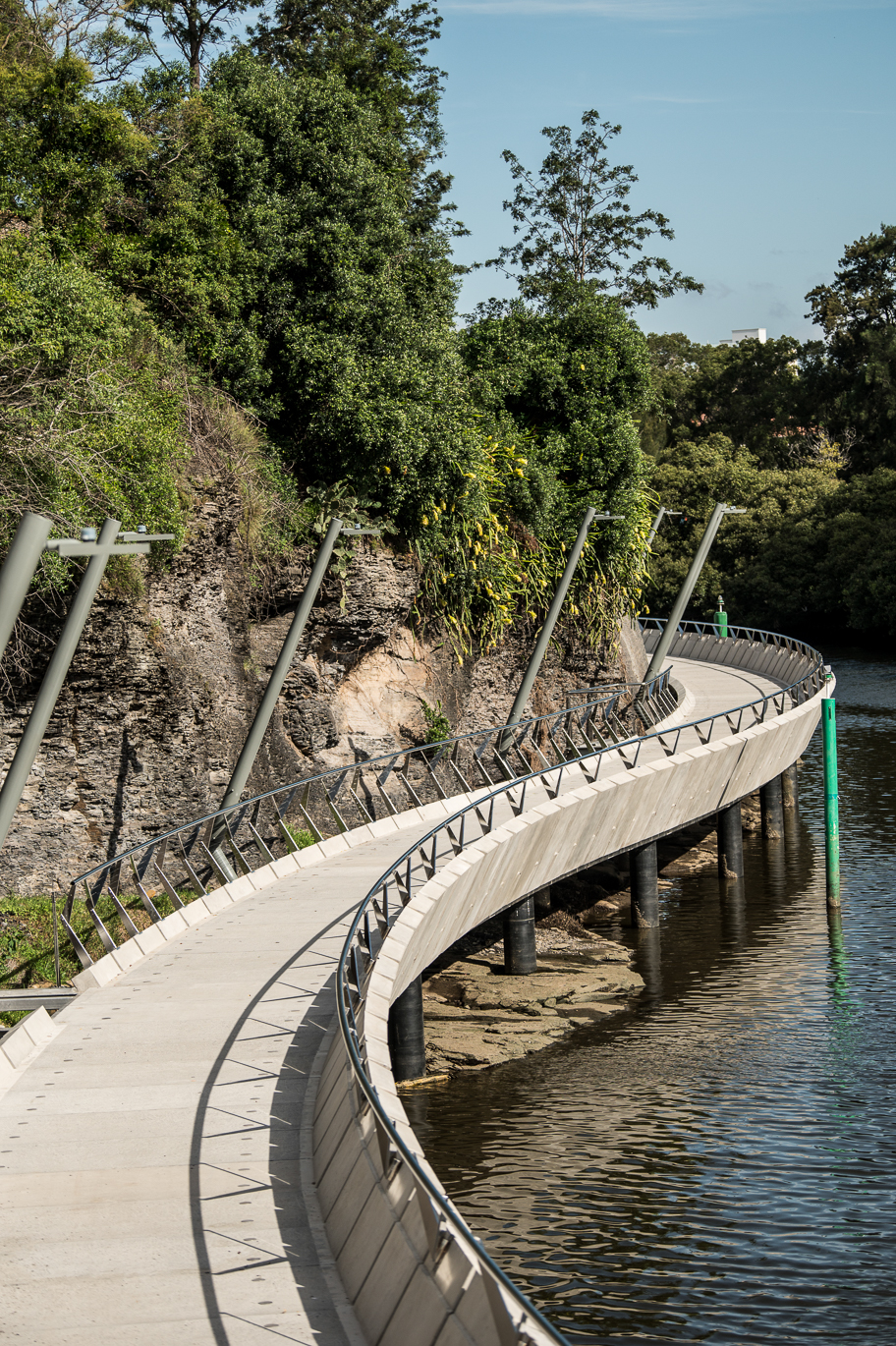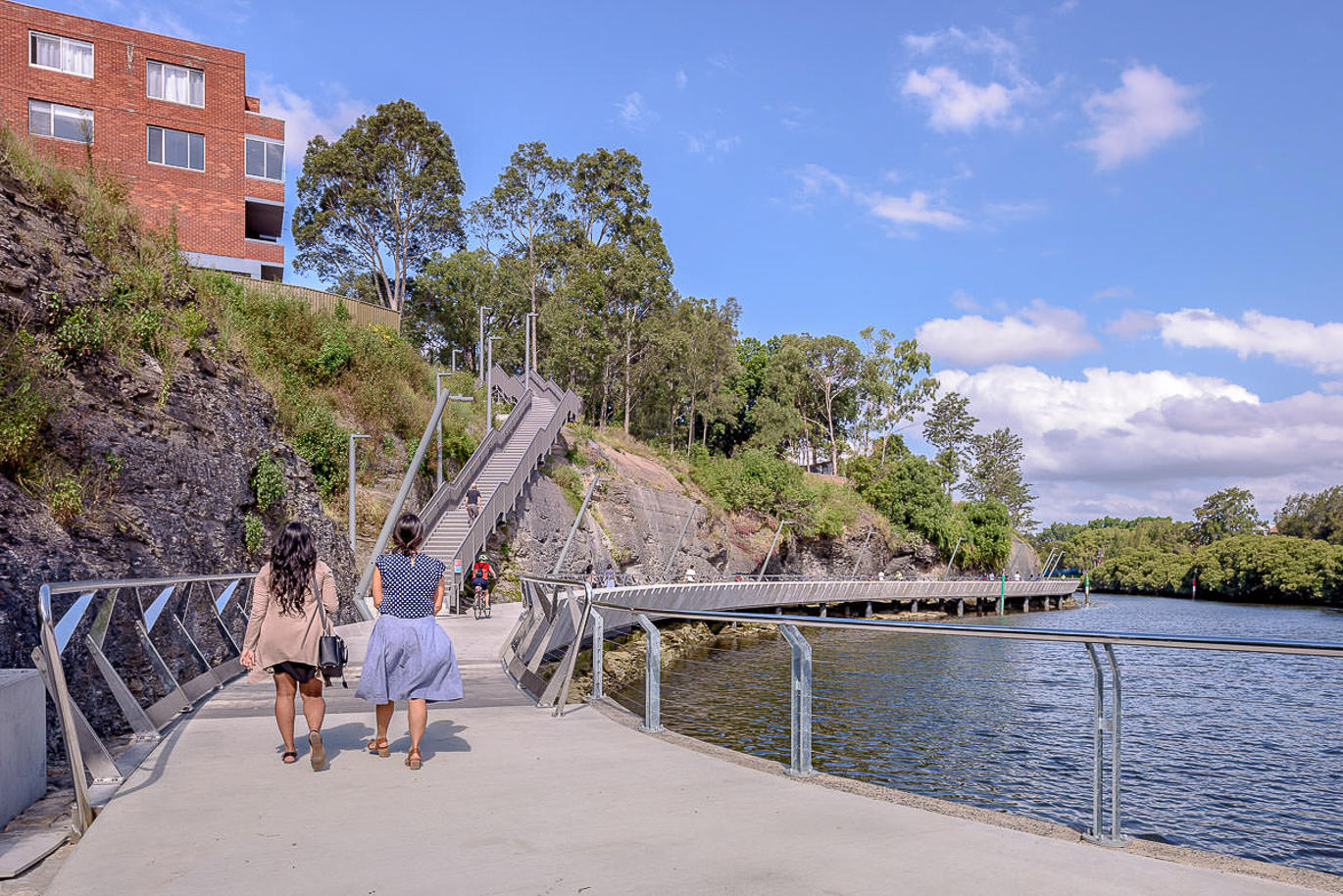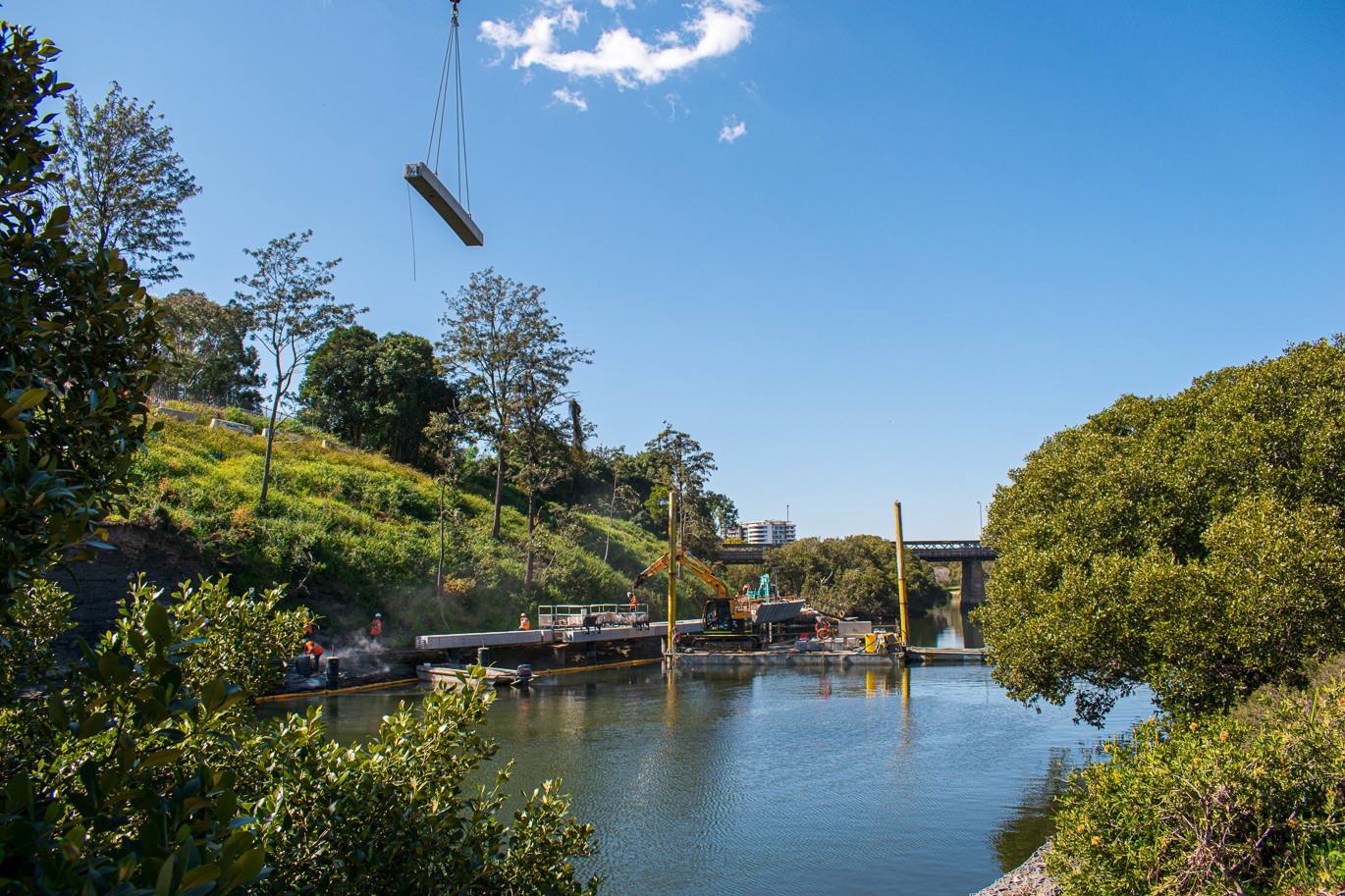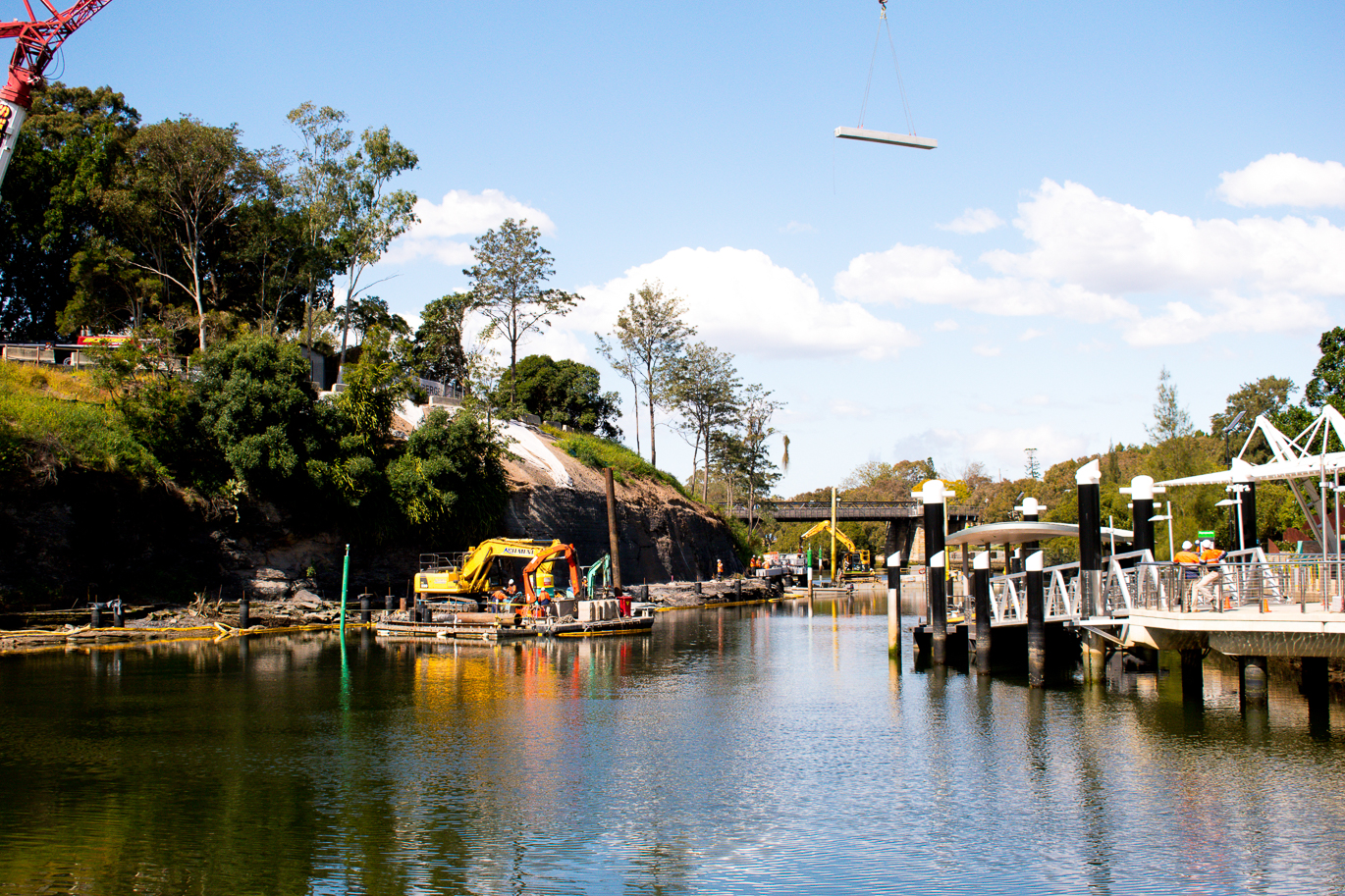river level boardwalk
precast beams installed
concrete piles constructed
precast panels installed
City of Parramatta engaged Abergeldie to construct the Escarpment Boardwalk, a continuous off-road walkway along the Parramatta River, connecting existing pathways from Charles Street Weir to Rangihou Reserve. The boardwalk is 500m long and 3m wide and includes a 220m elevated boardwalk section over the Parramatta River and a 130m steel concrete pathway with stairs connecting to Stewart Street.
Scope of works
The works included:
- Excavation of steep escarpment and spoil disposal.
- Ground stabilisation works.
- Supply and installation of ground and rock anchors, including, 88 precast beams and 159 precast panels.
- Pre-cast and in-situ concrete construction, including 59 piles, 53 steel CHS piles, and 6 600mm precast concrete piles.
- Construction of the shared pathway, concrete slab, and wall next to the weir.
- Supply and installation of prefabricated aluminium boardwalk and stairs.
- Lighting works, including installation of conduits, cables, and erection of lighting poles.
- Landscaping and associated works, including rehabilitation testing.
- Establishment and maintenance of site compounds, facilities, and stockpile areas.
- Installation of stormwater drainage and AGI lines.
Comprehensive planning and innovative construction methodologies
The construction methodology and staging of works were largely determined by river transport logistics, with the works carried out adjacent to and above the Parramatta River.
The piling and earthworks to stabilise the lower sections of the high, steep riverbank were carried out from pontoons positioned in the river, close to the channel used by Sydney Harbour Ferries. Coordination with waterway authorities and marine operators was essential to ensure that the necessary permits were in place and that there was no impact on ferry movements outside of pre-approved, short-term suspension of services. A key innovation in the project was the design and fabrication of a trolley that moved along longitudinal beams and served as a temporary work platform for the efficient installation of precast elements. This eliminated the need for tide-dependent barges, enhancing installation efficiency and de-risking safety on the project.
While earthworks to stabilise and reprofile the lower levels of the riverbank escarpment were being carried out using long-reach excavators working upwards from pontoons on the river, works on the upper section of the riverbank were carried out using long-reach excavators working downwards from the top of the escarpment. Spoil removed from the lower sections was loaded onto barges and moved to a riverside staging point for offloading onto trucks for removal from site.
The site was environmentally sensitive and provided habitat for several fauna species. A fauna spotter was present for all vegetation-clearing activities.
Temporary arrangements for the management of pedestrian and vehicle movements were carefully planned and were closely supervised. The site was adjacent to a school and close to existing, busy shared pathways. The temporary traffic management plan also provided for site access via the driveway of a private residence on Stewart Street.
Revitalising Parramatta foreshore for the community
The Parramatta Escarpment boardwalk was officially opened to the public in April 2021 and is a key part of the Parramatta Quay transformation, catering to nearly 2 million pedestrians and cyclists along the Parramatta foreshore annually. The Escarpment Boardwalk begins at the Charles Street Weir and extends along the north side of the Parramatta River to the Gasworks Bridge on Macarthur Street. The project was technically complex and required comprehensive planning and detailed construction methodologies for all aspects of the work. With works carried out within or adjacent to the Parramatta River, site access and logistics were challenging. Safety was a key priority on the project and every consideration was given to mitigating environmental risks, with stringent controls put in place to protect the flora and fauna. Despite five flood events, there were zero environmental incidents, an incredible achievement.






